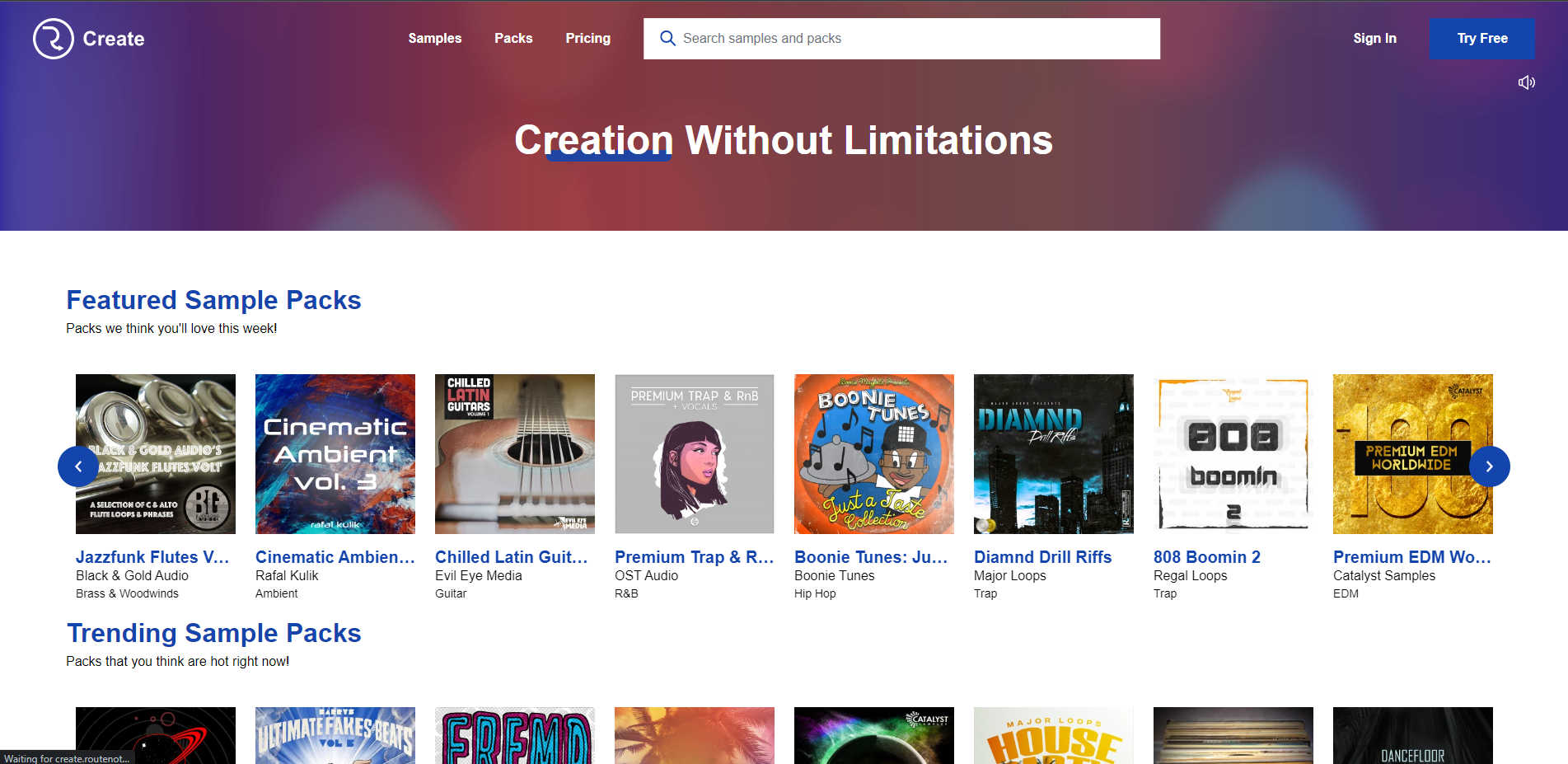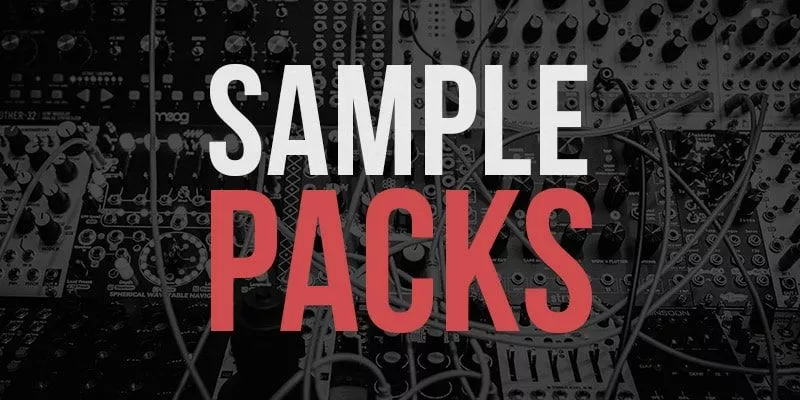How to make money from selling samples
In this digital age of music production, there are more ways than ever to capitalise on your creativity. Selling samples is one such avenue.
Whether you’re a seasoned sound designer, a budding music producer, or simply someone with a passion for crafting captivating audio, this guide is your roadmap to turning your sonic creations into a lucrative income stream.
In this blog, we’ll be taking a detailed look at the flourishing sample market, delving into various strategies and platforms where you can showcase and sell your original samples. From understanding the market to creating samples that stand out, we’ve got you covered.
So, whether you’re looking to make a side income or turn your passion into a full-fledged career, this blog will provide you with the insights, tips, and resources you need to thrive in this exciting and creative industry.

Sample Packs – The Basics
Before we even boot up our DAW or plug in a Guitar we must first understand the rules and terminology associated with Samples and the sample industry.
- Originality is key
By far the most important factor in producing samples is originality. While you can be inspired by a song or styles, your sample compositions must be original. If using virtual instruments you will need to check the end-user agreements as there are often clauses preventing their re-purposing in commercial samples. This is particularly the case when selling one-shot samples. Never use any 3rd party audio even if it is in the public domain. - Royalty vs Royalty-Free
Samples tend to be split into two categories. Royalty samples typically involve ongoing payments to the creator when used. These royalty payments are generally triggered when a track incorporating the sample reaches a certain threshold i.e. 1 million streams or a major label placement. Royalty-free samples on the other hand grant usage rights without any recurring fees. - Loops & One Shots
Samples are generally divided into two categories – Loops and One Shots. Loops are audio clips that play in a continuous, repeating pattern. Typically loops will be trimmed to a specific number of bars and used for creating musical phrases or background elements. In contrast, one-shots are individual audio snippets that play once when triggered, commonly used for isolated sounds like drum hits or sound effects. - Construction Kits
A construction kit refers to a specific sample composition that has been provided with separated isolated elements i.e. Bass, Piano, Kick, Snare etc. Kits can be particularly useful as they allow you to create more variation using the component parts of a sample.. - Metadata
While different sample companies have different naming conventions for samples there are a few aspects that should always be considered. For any sample loop it’s advisable to provide the BPM value. If the sample is melodic then it can be very useful to add the key and scale of the sample. Accurate tagging and categorization can also help users find your samples using search functions. - Added Extras
Midi files are a great addition to a sample pack as they allow users to apply their own virtual instruments to a loop. Synth and instrument presets also add extra value by providing users with the same sound design used in your samples.
Choose your lane
The range of available sample packs is extensive, encompassing every musical genre imaginable. When considering the sort of samples you would like to make it’s advisable to prioritize your own musical strengths rather than following popular trends. With so much competition it’s important to focus on your strengths as a producer. If you’re a wiz at drum programming begin by crafting drum packs. Are you skilled at playing the guitar? Consider creating guitar-based samples. If you’re a talented vocalist, explore the production of vocal packs.
And when it comes to music styles, begin by focusing on your own particular speciality if you have one. It’s essential to have an in-depth understanding of your chosen genre and its defining characteristics. Keep in mind that certain genres may enjoy greater popularity and demand than others. Deep House, Techno, Trap, Hip-Hop, Lofi and DnB sample packs are always very popular but at the same time, you will be competing in a more saturated arena. That’s why you’ll need to ensure your samples are of the highest quality and creatively compelling.
When considering the types of samples you want to create try identifying gaps in the market. Or maybe you could devise an interesting theme for a pack. Sometimes coming up with a really good sample pack title can inspire the direction of the samples you make for it. Finding a unique niche can be advantageous but at the same time don’t get too niche. While you may have a natural talent for Austrian Yodeling the demand might not be there for such yodel-based vocal samples.
The main thing when crafting your samples is to enjoy the creative freedom that sample-making allows.

Sample production
When people purchase samples they have an expectation that the samples will be produced to the highest standard. (Or lowest standard if applied to Lofi packs.) Taking exceptional care in the preparation of your samples is therefore key. Ensure that if you’re producing melodic samples they are tuned to concert or standard pitch. The most widely accepted international standard for concert pitch is A440, which sets the frequency of the A above middle C at 440 Hz.
Whenever possible you should try to make your instrumentation as unique as possible. When using virtual instruments be aware that the user agreements may not allow their usage in commercial sample creation. This is particularly true with arpeggiators, preset melodies, and highly distinctive sound fx.
If you’re creating vocal or acoustic instrument samples make sure you record in a suitable space. Ideally an acoustically treated room. Your mics, mic preamps and analog-to-digital converters should be of a professional standard. Any such live recording should be done to a click or guide. This will ensure your samples will have an accurate BPM value allowing them to be easily dragged into a session.
The volume level for preparing royalty-free samples can vary depending on your specific use case, but it’s generally a good practice to aim for a consistent and moderate volume level. Normalization is often applied to ensure that samples are brought to a standardized level without clipping or distortion. Avoid hard limiting as you will want the end user to be able to apply their own processing.
File preparation
Once you’ve created all of your sample material it’s important to take care with the exporting and filing process. Most samples are released at 44.1 kHz or 48 kHz, 24-bit wavs. Avoid using mp3s for your samples. If you’re making your samples in-the-box, it’s best to start your sessions at 48 kHz and 24 bit.
Organizing the naming and folder structure for a sample pack is crucial for user-friendliness and efficient workflow. Here’s a recommended approach:
- Main Folder: Create a main folder for your sample pack using the title of your pack as the folder name. This folder will contain all subfolders and files related to your sample pack.
- Loop and One-Shot Subfolders: If using a combination of Loops and One-Shots first organize your samples into subfolders based on these two categories.
- Category Subfolders: Then organize your samples into subfolders based on categories or types of sounds. For example:
- Drums
- Percussive
- Synth
- Vocals
- FX
- Further Subdivide: Within each category folder, consider further subcategorizing the samples based on characteristics like instrument type, tempo, or key.
- Construction Kit structure: If your pack contains construction kits create separate folders for each kit. Name each kit either numerically or with a name. Then place the samples for each kit in their respective kit folder. For each individual sample Include the number/name of the kit in the naming. This will avoid any potential duplicate sample name issues.
File Naming:
- Descriptive Names: Give each sample a descriptive name that reflects its content. Avoid generic names like “sample001.wav.”
- Include Metadata: Consider adding metadata to your samples, including information like tempo, key, and any relevant tags. This makes it easier for users to search and find the right samples.
- Versioning: If you have multiple versions of a sample (e.g., variations in intensity or style), use a consistent numbering system to differentiate them, such as “SampleName_V1.wav” and “SampleName_V2.wav.”
- Use Underscores or Hyphens: When separating words in file names, it’s generally better to use underscores (_) or hyphens (-) instead of spaces. This ensures compatibility across different software platforms.
- Avoid Special Characters: Steer clear of special characters, symbols, or spaces in file names, as they can sometimes cause compatibility issues.
- Consistency: Maintain consistency in your naming conventions across all samples within the pack. This helps users understand and navigate your sample library effectively.
Selling Options
So you’ve laboured long into the night on your pack crafting samples fit for a 3x Grammy award winner. All you need now is to get it out there into the world and in front of hoards of hungry sample fiends. This is where you will be faced with various options.
Exclusive or non-exclusive?
The first major consideration to make is do you want your sample pack to be sold exclusively or non-exclusively. By distributing your samples non-exclusively you will retain the rights to your pack. You can therefore sell your pack non-exclusively on numerous different platforms. And talking of sample selling platforms there are plenty out there to choose from. Take RouteNote Create for example. We aim to democratise the sample industry by offering anyone the option to sell their sample through our platform. You can apply to be a contributor by filling out this application form.

Alternatively, some larger sample-selling sites may want to distribute your packs on an exclusive basis. Sites such as Splice or LoopMasters will often offer vendors a set term of exclusivity. The advantage that these sites provide is a wider audience with higher potential sales. This must be weighed up against the advantages of retaining the rights to openly distribute on various platforms.
Individual Packs or Subscription model?
When it comes to selling your sample through an established site there tend to be 2 distinct sales models. The first is an al a carte approach where you sell a full pack for a set price. Deciding on a fair price to charge will require a certain amount of research. The other option that’s widely used is a subscription model. Users will generally pay a monthly fee for a set amount of credits. They can then pick and choose the samples they want by spending their credits. Both of these models can work well. If you decide on the non-exclusive approach then it could be worth trying both models to see which works best for your content.
DIY approach
While distributing through an established sample site has its definite advantages, it’s also possible to set up an e-commerce site and sell your packs yourself. Platforms such as Shopify or Big Cartel make it relatively easy to create an e-commerce site where you can sell your digital products. You will however have to direct traffic to your site. Social media and YouTube are tried and tested avenues to help promote your site and samples. It is also worth exploring other non-specialist music-selling platforms. Many will offer the facility to host and sell your packs. Beat-selling sites such as BeatStars and Airbit both offer the facility to sell sound kits.

Whichever DIY selling approach you go for, don’t underestimate the power of an email mailing list. Harvest as many contacts of users that have engaged with your music or content as possible. This can then be used for direct marketing campaigns.
Samples for Hire
If your sample-making skills are particularly impressive then it could be worth approaching larger established sample labels. Many of these labels will work in partnership with composers and sound designers. Check out their websites as they will often provide contact details and information about becoming an in-house sample maker. If you manage to establish a successful relationship with a 3rd party company then this has the potential for a reliable and regular income. Just be aware that you would most likely have to assign any sample compositional rights to the label.
Summary
So there you have it. Hopefully, this post has inspired you to get your sample hat on and create some loop-worthy gold! And don’t forget, if you do have some packs ready to go why not hit us up at RouteNote Create? We would love to hear what you’ve got!
Remember – RouteNote Create subscriptions start from as little as $2.99. You also get 10 FREE credits to spend on samples along with access to our FREE sample pack bundle when you sign-up!
